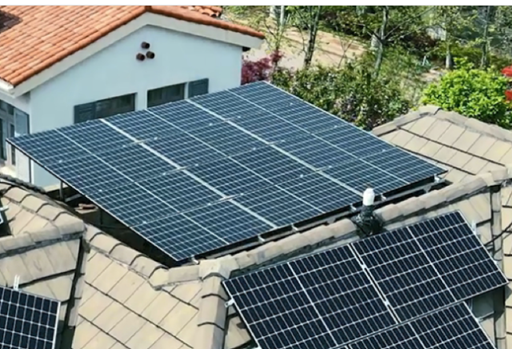Sun Solar Inverters 101: A Comprehensive Guide for Solar Enthusiasts
The sun, a cosmic powerhouse radiating energy beyond imagination, has become a focal point in our quest for sustainable energy. Solar power systems, with their ability to harness the sun's energy, have gained popularity. At the heart of these systems lie the unsung heroes—sun solar inverters. In this comprehensive guide, we delve into the fundamentals of sun solar inverters, providing a roadmap for enthusiasts eager to embark on a solar-powered journey.
Understanding the Basics
Before we dive into the intricacies, let's establish the basics. A sun solar inverter is a crucial component in a solar power system, responsible for converting the direct current (DC) electricity generated by solar panels into the alternating current (AC) electricity used to power our homes and businesses. Essentially, it acts as a translator, ensuring the energy harvested from the sun is compatible with our electrical systems.

Types of Sun Solar Inverters
Sun solar inverters come in various types, each designed to cater to specific needs and scenarios. The main types include:
String Inverters
These are the most common type, often used in residential and small-scale commercial installations. They connect to a string of solar panels, converting the DC electricity from the entire string.
Microinverters
In contrast to string inverters, microinverters operate at the individual panel level. Each solar panel has its dedicated microinverter, offering enhanced performance in situations where shading or panel mismatch is a concern.
Central Inverters
Typically employed in utility-scale solar installations, central inverters manage the entire array of solar panels. They are efficient for large-scale operations but can be affected by shading issues.
Battery-based Inverters (Hybrid Inverters)
These inverters work in conjunction with energy storage systems, allowing users to store excess energy for later use. They are a key component in solar-plus-storage setups.
Functionalities that Matter
Beyond their basic function of converting DC to AC, sun solar inverters boast a range of functionalities that contribute to the efficiency and performance of a solar power system:
Maximum Power Point Tracking (MPPT)
This technology optimizes the performance of solar panels by continuously adjusting the operating point, ensuring the system operates at its peak efficiency, even in varying environmental conditions.
Monitoring Systems
Many modern inverters come equipped with real-time monitoring capabilities. This empowers users to track the performance of their solar power system, monitor energy production, and identify potential issues promptly.
Grid-Tied vs. Off-Grid Inverters
Depending on the installation, inverters are classified as grid-tied or off-grid. Grid-tied inverters are connected to the utility grid, allowing for the sale of excess energy back to the grid. Off-grid inverters, on the other hand, are designed for standalone systems with energy storage.

Key Considerations for Solar Enthusiasts
For those venturing into the realm of solar energy, several key considerations can shape your solar power journey:
System Size
Determine the energy needs of your home or business to size your solar power system appropriately. A larger system may require a different type of inverter than a smaller residential setup.
Budget
Sun solar inverters come with varying price tags. Consider your budget and weigh it against the functionalities you deem essential for your solar power system.
Location and Shading
The geographical location of your solar installation and potential shading issues should influence your choice of inverter. Microinverters are ideal for situations where shading can impact performance.
Future Expansion
If you plan to expand your solar power system in the future, choose an inverter that allows for scalability.
Conclusion: The Dawn of Solar Empowerment
As we wrap up our journey through Sun Solar Inverters 101, it becomes evident that these devices are more than mere translators of energy—they are the enablers of a solar-powered future. Whether you're considering a small residential installation or a large-scale commercial project, understanding the nuances of the battery inverter solar system is key to harnessing the full potential of solar energy. So, equip yourself with knowledge, embrace the power of the sun, and embark on a journey towards a cleaner, greener, and more sustainable tomorrow.








